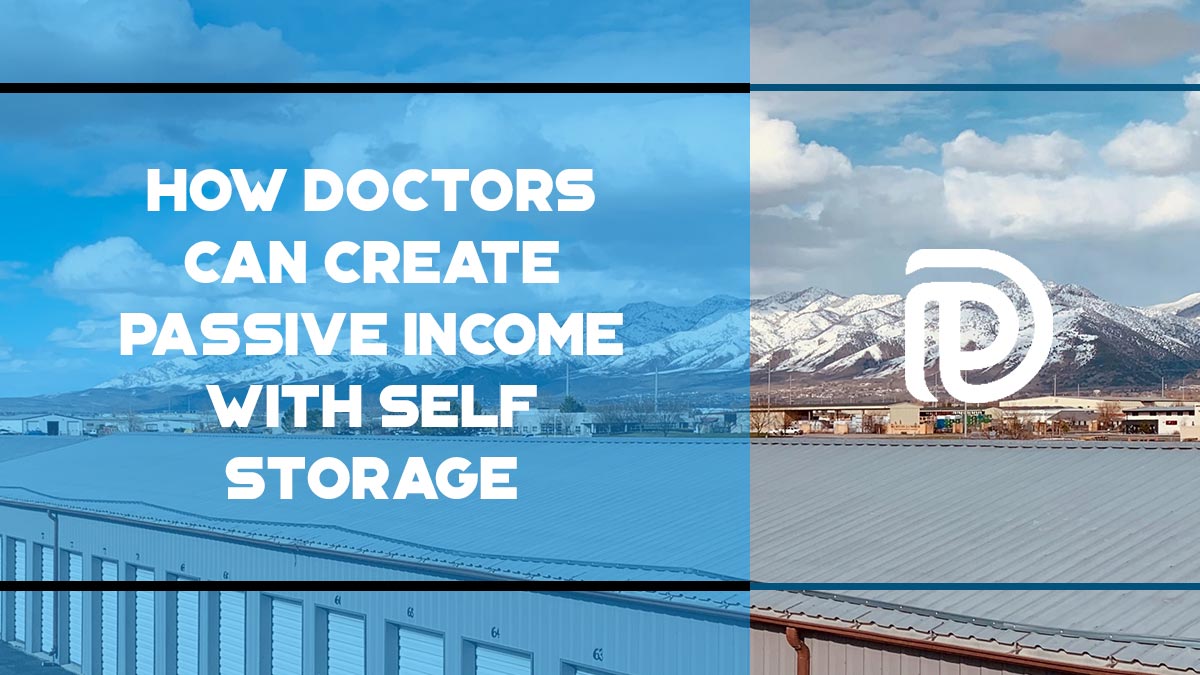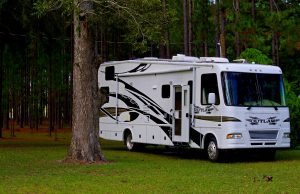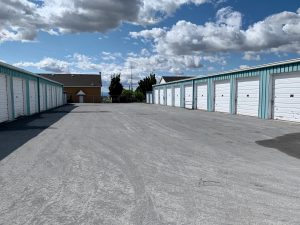Who would have thought that a pandemic causing a world to shut down would cause some businesses to fail and others to thrive such as the self storage industry.
That’s right, self storage.
It seems that when American households couldn’t work and free money was sent to them via the government, their boredom was relieved by online shopping.
Retailers such as Amazon and Walmart thrived posting some of the highest profits ever.
So what are we supposed to do with all of this “stuff” we’re buying?
Occasionally people call in to the Dave Ramsey show suffering from what he calls “stuffitis“.
These individuals have become unable to live without buying more and more stuff. To them it’s an addiction.
Some of the most successful entrepreneurs have gotten their start by simply finding a problem and solving it.
Become a problem solver!
Well it seems to me that America has a problem – too much stuff- and the solution is where to store it.
Enter the solution – self storage units!
As a busy professional, you want to make sure that your money is working hard to keep you from having to work more hours. Investing in areas that are providing a need is one of the keys to success.
So the question remains, should you invest in self-storage facilities?
Let’s find out….
Everything is BIGGER In Texas
Worldwide there are roughly 60,000 self storage businesses and 2.3 billion square footage of rental storage space in the United States. That’s more than three times the size of the island of Manhattan!
Only a short 50 years ago, self-storage businesses were mainly “mom and pop” operations with little to no competition. But times have drastically changed as most owners are moving towards state-of-the-art facilities to keep up with the growing competition.
It’s been stated that the self-storage facility concept was first started in China over 2,000 years ago but it didn’t become popular in the United States until the early 1960’s in Texas.
Rents were much cheaper back then:
- In the 1960’s, you could rent monthly for 15 cents per square foot
- In 1985, monthly for 60 cents per square foot
- Late 1990s, rental rates averaged one dollar per square foot
- Today you can expect to pay a monthly rent of anywhere from $1.50 to $4 per square foot depending on the market
As competition as gotten tougher, most self storage facilities are going towards amenities such as:
- touchless payment options
- computerized gate entry
- units with climate control
5 Reasons Why People Use Self-Storage Units
Here’s 5 reasons of why consumers are using self storage space:
#1 Moving
During my training both in dental school and 2 surgical residencies, we became proficient with moving.
One of the downsides was that at times it could be stressful.
In order to help relieve some of this “moving” stress, many homeowners a lot of time will rent storage units temporarily.
This also helps those that are in the process of downsizing later in life such as boomers.
Their age group tends to downsize more than any other causing a high demand for more storage units.
#2 Free up space at home
It seems as if every year my wife gets into the “spring cleaning” mode putting the stuff we rarely use under the carport.
For others that also practice this each year, you have two choices: throw it out or find extra space
to store it (storage unit).
Occasionally people will temporarily rent a storage unit while going through this decluttering process. This makes it easier as they can sort through what “stays” or “goes” more slowly causing less stress.
#3 Extra business space
If there’s a top way that the 2020 pandemic changed the work landscape it’s this; MORE people worked from home than any other time in history.
This is still also the case depending on your industry and what area of the country you live in.
To free up space at home, those working remotely have been using storage space to house their supplies and other business related items.
An example would be the drug rep that needs to store medicine and supplies they distribute to clinics and hospitals.
#4 Off season storage
You’ve more than likely heard the phrase that “boys love toys“.
Being a Louisiana native, we especially love our toys such as:
- boats
- ATVs
- side by sides
As you can imagine, our better halves don’t want them in the front yard which makes self storage a great way to house them.
#5 For loved one’s possessions
Dealing with a loved one passing is tough but also having to go through their possessions can be even harder to deal with.
This happened to us when we lost my grandmother (we love you Memo!) a few years ago. My mom was put in charge of sorting through her entire house full of possessions.
To help alleviate stress, often self storage is needed in order to slow down the process of going through their things before selling or discarding them.
Other Self-Storage Stats
- According to the Self Storage Association, annual industry revenue = $40 billion
- Guesstimated number of U.S. storage facilities is 54,000
- Roughly 11% or 85 million Americans rent storage space
- Average storage unit price $88.85/month
- Average facility occupancy rate = 92%
- On average, renters keep their units for over three years.
- Average profit margin is 41%
- Amount of self-storage space in the US: 5.4 square feet per capita
- The typical size of a storage unit facility is 2.5 to 5 acres, with an average of roughly 540 units and 46,000 sf of rentable space.
Largest U.S. self-storage development operators (by number of facilities, owned or managed)
- Public Storage: 2,844
- Extra Space Storage: 1,878
- U-Haul: 1,778
- CubeSmart: 1,261
- National Storage Affiliates Trust: 948
- Life Storage: 905
Data from Self Storage Almanac 2021
Self Storage Industry Economics
3 Main Areas
- tax benefits
- cash flow
- appreciation
Depreciation increases cash flow by providing a non-cash tax deduction.
Leasing
Investors in self storage benefit from the property’s cash flow which is the rental income minus expenses and mortgage. The primary cash flow source is from the leasing of the units.
The majority of those that lease rent for at least three months with the average of three years.
The best way to stay profitable it to keep the majority of the units rented out similar to an apartment building.
Whenever our group first purchases an apartment complex, our business model causes us to evaluate the most sought after room types (one bedroom vs two bedroom vs three bedroom) and then potentially convert more units into the most popular one.
For instance, the one bedroom units might stay full but the three bedroom units are harder to lease. This would be an opportunity to convert some of the three bedroom units to a one bedroom.
Regarding self-storage facilities, there’s going to be different types and sizes of units that perform better than others.
Here’s a typical baseline mix (in square feet):
- 5×10: 15%
- 10×10: 40%
- 10×15: 25%
- 10×20: 10%
- 10×25: 5%
- Expansion space: 5%
Other ways to increase profitability would be to offer services that competitors don’t such as storage space for larger vehicles such as RVs and boats.
Development Costs To Build
Here’s a general guide to what it would cost to build a successful business in self storage based on unit and land size:
- 40,000 sq ft facility would need 2-3 acres
- 60,000 sq ft facility would need 3-4 acres
- 80,000 sq ft facility would need 4-5 acres
As competition is increased, the technology demands have as well. Many of today’s customers (40%) request climate controlled units which can really add to the profitability. It costs only 10 cents per square foot extra to add this feature but rental prices can be increased 25-60%.
Depending on the region and building size, the cost to build can vary:
- single story units $25-$40 per sq ft
- multistory units $45 – $75 per sq ft
Other costs to factor would be security cameras and systems, plumbing, security guard and electricity. These can add anywhere from $18-$50 per sq ft to the total bill.
Why Invest In Self Storage?
#1 High demand
#2 Multiple business opportunities
This matches perfectly for those needing to move items from their home anyway, so why not become a one-stop shop?
#3 Large income potential with low overhead
Self-storage projects are known for having a large income potential with a below average overhead. This is mainly due to NOT having to deal with tenants that live on the property.
Because of this, there are fewer building components that can go wrong such as leaky toilets or broken pipes and maintenance doesn’t have to clean carpets, pain or redo flooring.
When a storage unit becomes vacant, turnover usually involves simply sweeping out the space for the next tenant.
Most of these facilities can be nearly self-sufficient, requiring only part-time management.
Don’t Miss Any Updates. Each week I’ll send you advice on how to reach financial independence with passive income from real estate.
Sign up for my newsletter#4 Tax benefits and cash flow
Most people initially start investing in real estate because of the additional cash flow it provides. Having extra income streams coming in sure beats having to stress about money whenever business is down (or a pandemic strikes!).
Self storage investing is able to supply both cash flow and tax benefits which is very important for the high income earner.
These investments allow you to take advantage of depreciation which helps to offset the passive income.
I’ve typically invested in syndication deals with other limited partners that take advantage of these pass-through deductions which allows us to keep more of our hard-earned money.
#5 Higher cap rates
The term cap rate is commonly used in commercial real estate to indicate the rate of return that a property is expected to generate.
It’s based on a ratio of the current income to the market value of the property.
Most cap rates are calculated by taking the net operating income and dividing it by the market value.

The self-storage space hasn’t been as competitive as investing in multifamily (but things could change). For this reason, the cap rates have been much higher than multifamily assets.
On average, self-storage cap rates tend to average roughly a point higher than multifamily.
Are Storage Units Profitable?
I love watching Shark Tank with my kids. One of the questions the sharks routinely ask those pitching deals is regarding their cost to acquire a customer and if they profitable or not.
Depending on what business you’re in, knowing your profit margins is one of the keys to financial success.
This is no different when it comes to the self storage development world.
Research shows that:
- average storage facility is 60,000 to 80,000 of rentable sq ft
- break-even occupancy is 40 to 60%
- most successful facilities operate with 83% to 93% occupancy
- they also produce net income of 26% of rental income after paying expenses/debt
How To Invest In Storage Units
Here are the three main ways to get starting investing with storage units.
#1 Direct ownership
The main reason high-income earners join the Passive Investors Circle is that they’re searching for, you guessed it, income passively.
Most are too busy to manage property (tenants) while working full time so they mainly focus on passive investments.
If this is your goal (as it is mine), then owning a self storage unit in your local market may not be too appealing but it is a potential way of investing.
If you don’t know where to start, then consider finding someone to mentor you that’s already knowledgeable about this particular asset class.
3 areas to consider:
a. Building and construction costs – As mentioned earlier, the average cost to build is $25-$40 per sq ft for single story or $45 – $75 per sq ft for multistory units. These figures don’t take into account any site improvement costs.
b. Land costs – Typically the average land cost is going to be 20-30% of the total development cost. As with anything else regarding real estate, it all boils down to location.
c. Market analysis – Do you have any idea what property/land is going for in your area? Probably not which is another reason why finding someone to mentor you will help. I was hesitant to ask someone to mentor me but what I found is that these people will bend over backwards to help. Most realize that they’ve gotten to where they are by outside help from others. People in the “know” can guide you on topics such as the potential of your occupancy, other competitors and whether or not to offer higher end units (i.e. climate controlled).
#2 Investing in REITs
Another way to invest in self storage units is via a REIT or real estate investment trust. When investing in this manner, you’re buying stock in a company that invests in commercial real estate.
They can either be private or public.
Most REITs are listed on major stock exchanges which makes them easy to invest in. You can do this directly, through mutual funds, or via exchange-traded funds online.
One of the advantages to REIT investing is that you’ll have access to your money (it’s liquid) if you get into a bind. So at any time you can either buy or sell shares of your REIT.
#3 Syndications
Based on the original goals my wife and I created, we knew that time was our most important resource and that investing in something that took up more of it was out.
We turned our focus to learning and eventually investing in passive syndications. These are group investments that are attractive to busy, high-income professionals as you can passively invest while still benefiting from many of the tax advantages.
The majority of our syndication investments are in the multifamily space. We’re currently in the process of diversifying into other asset classes such as storage units as they have been known for being one of the most recession resistant investments.
Similar to investing in apartment syndications, the #1 important factor is to perform due diligence and vet trusted sponsors to work with with a proven successful track record.
Related article: 7 Ways To Evaluate a Real Estate Sponsor
Are You Ready To Learn How To Build Additional Income Streams?
Join the Passive Investors Circle to get started today.
Join the Passive Investors Circle









